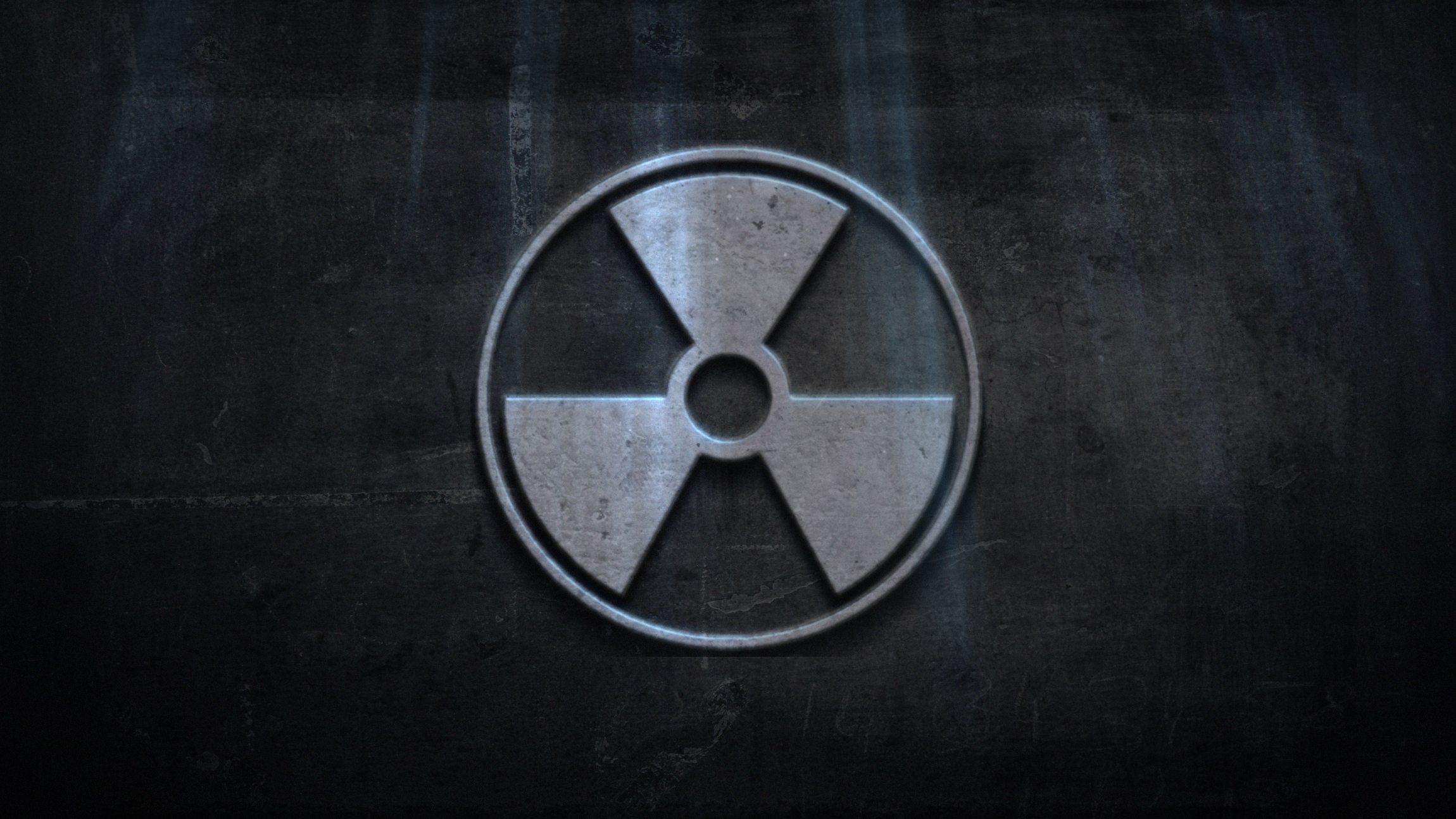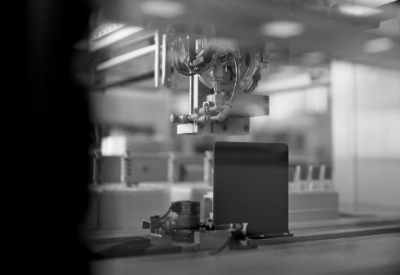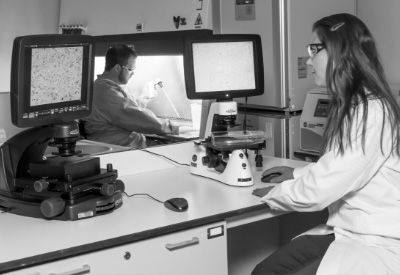As a company that builds batteries powered by radioactive decay, City Labs is constantly working to harness radioisotopes for the microelectronics industry. Understanding the difference between normal isotopes and radioactive isotopes, how radioactive isotopes are formed, and the countless ways in which they can be used is an important part of handling them.
What Is a Radioactive Isotope?
A radioactive isotope, or radioisotope, is an unstable form of an element that emits radiation in an attempt to return to a more stable form.
Isotopes are versions of the same element with the same atomic number but a different atomic mass. Stable isotopes have a close enough number of protons and neutrons that the nucleus itself will be balanced.
Why Are Isotopes Important?
Unstable isotopes maintain unique properties that can be studied and harnessed both for research and practical applications. There are ways to use these substances for medical treatment and diagnosis. Certain isotopes can also act as an energy source for different devices.
Are All Isotopes Radioactive?
There are a variety of stable isotopes in the natural world which do not undergo radioactive decay. The stability of an isotope is determined by the driving forces of its nucleus. The protons have a positive charge and repel each other. The neutrons have no charge, but due to the strong nuclear force the protons and neutrons are pulled together. When an isotope is stable, the push/pull of protons/neutrons is balanced enough that the atom can maintain its structure. However, when the charge becomes unbalanced, the atom will begin to decay.
If there are too many or too few neutrons, the atom will begin to steadily collapse. Radioactive isotopes will continue to decay until they have disappeared with no trace. Some will last for millions of years, others only a few hours or days. Due to this decay of radioisotopes, most of those in existence right now have been created relatively recently.
What Causes Radioactive Isotopes?
Radioisotopes can result from natural reactions or artificial alteration of atoms. Nuclear reactors and cyclotrons may create radioactive isotopes. Different mechanisms lead to different types of molecules. For example, nuclear reactors often form neutron-rich isotopes and cyclotrons form proton-rich isotopes.
The most popular example most people think of when they think of an isotope is uranium. Most of the existing substance is uranium-238, but around 0.7% is uranium-235, which has three fewer neutrons in the nucleus. This imbalance at the core of the atoms leads to steady decay—also referred to as radiation.
What Is Radioactive Decay?
As an atom becomes radioactive and its nucleus destabilizes, it will shed both energy and heat particles in the form of radiation. This process is called radioactive decay and is unique for each different radioisotope.
Radioactive decay can be harnessed by nuclear batteries as a consistent power supply. Batteries have been developed that capture the heat from radioactive decay to produce electricity. Other batteries convert the kinetic energy of shed particles into electricity.
In both scenarios, radioactive decay presents itself as one of the most reliable power sources on the planet due to its unwavering consistency. Other mediums of electricity—like wind, solar, and hydroelectric—are directly affected by environmental conditions. On a cloudy or still day, you may receive less of a charge than on a sunny or windy day. With radioisotope generators, the power output is steady and predictable until the radioactive material decays.
Even more traditional power sources like electrochemical batteries are limited by the nature of their chemical reactivity. Extreme temperatures can drastically affect a traditional battery’s functionality. They are also prone to corrosion and electrochemical leakage that can destroy or severely affect their performance.
Radioactive Isotope Half-Life
Radioactive decay is measured by its half-life. Half-life is the time it takes for one half of the unstable atoms in an isotope to decay. The most important aspect of half-life is that the decay rate is consistent over time.
If a substance emits 100% energy at the beginning of its lifespan, and 50% when it has lived half of its lifetime, it follows that you can predict the available amount at any point in time. Researchers can study the half-life of isotopes by recording the rate of steady decay and extrapolating the rest.
Radioactive Isotope Examples
According to the International Atomic Energy Agency (IAEA), there are thousands of known isotopes that have been discovered through atomic alteration; while less than 100 have been discovered in nature. Emitted radiation occurs as alpha, beta, and gamma particles. The most well-known radioactive isotopes either serve a practical purpose or have been popularized by the media.
One of the most common radioactive isotopes in nuclear waste is technetium-99 (Tc-99). Technetium-99 is a radioactive metal that is found after nuclear explosions or reactor operations. Tc-99 can remain in the environment for hundreds of thousands of years.
In the medical industry, however, doctors use Tc-99m, a short-lived form of the original isotope, as a diagnostic tool. This variation of the isotope has a half-life of only 6 hours, making it much less hazardous for medical purposes.
Another recognizable radioactive isotope is carbon-14 (C-14). Carbon is an abundant element that normally holds six protons and six neutrons in the nucleus. Interaction with the nitrogen in Earth’s atmosphere can sometimes lead to two extra neutrons in the nucleus. This destabilization leads to a half-life of roughly 5,700 years. C-14 is so important because it’s the primary isotope used for radiocarbon dating. This is a method for determining how old discovered artifacts are by dating the organic material within them.
There are many other radioisotopes that also serve valuable functions. For example, City Labs uses small amounts of tritium—an isotope of hydrogen created by nuclear power plants—to make batteries that last for decades. These NanoTritium™ Batteries power microelectronics in remote areas and harsh environments where traditional electrochemical batteries cannot endure.
Radioactive Isotope Uses
Below are some key qualities that make radioisotopes so useful across multiple industries.
- Predictable decay: The rate at which radioactive isotopes decay is steady and does not fluctuate based on changes in the environment or surroundings. This makes incorporating them into other devices much easier.
- Radiation: The particles released during radioactive decay can serve a variety of uses, from treating tumors to making electricity.
- Traceability: The radioactive signature of these isotopes is easy to track and/or locate. This can help gain valuable information on depth, location, movements, etc.
- As we continue to learn more about the unique qualities of radioactive isotopes, we will better be able to use them to benefit mankind.
Power Sources From Nuclear Isotopes
Radioactive decay is released in the form of heat and energy. Mechanisms have been designed to capture that decay and harness it to power other devices. Instead of directly powering devices with radioisotopes, the decay will often steadily charge a battery that can be used when the device requires a certain threshold of energy.
Both thermal and non-thermal conversion nuclear batteries have been developed. The conversion efficiency of a radioactive power source is controlled by three main characteristics: diffusion length, semiconductor conversion, and isotope emission efficiency.
Some radioisotopes are more effective power supplies than others. Some can produce massive energy for unfathomable amounts of time––though they are dangerous. The most important piece of developing an effective radioisotope generator is understanding the devices it’s intended to power.
Isotopes in Medicine
Radioactive isotopes can be harnessed in small amounts to help image a person’s body, their organs, or a disease. This information is typically used to make a diagnosis. In some cases, radiation can also be used as a treatment for tumors or infected organs.
Medical isotopes are made in a reactor by exposing materials to neutrons or in an accelerator by exposing them to protons. Some hospitals even have their own cyclotron accelerators to make radiopharmaceuticals that have very short half-lives.
Radiopharmaceuticals attach radioactive isotope tracers to ingestibles for imaging purposes. These pharmaceuticals must be very carefully dosed so as not to negatively affect the patient.
Isotopes in Industry
Radioactive isotopes are commonly used as tracers in industrial processes. They can be tracked with different components and packages in places where other devices can’t be. After a certain amount of time, they will decay with no trace or waste left behind. These can be used to find leaks, check efficiency, measure substance mixing rates, and more.
Radioactive isotopes are often lowered into drill holes to identify gas and oil deposits. The radiation can clean or sterilize equipment. Nuclear reactors are powered by breaking down big isotopes through nuclear fission. Gamma rays are capable of being used like X-rays on buildings and infrastructure to check for flaws. This testing is non-destructive, meaning it leaves the structures unharmed.
Other Applications of Radioactivity
As mentioned above, radioactive isotopes are also the reason we can perform radiocarbon dating. This process is essential to anthropologists and those studying the last 50,000 years or so. Our ability to accurately date organic matter from that far in the past provides insight as to what human populations were up to back then.
Protection From Radiation
One of the challenges of nuclear power and using radioactive isotopes is the effects of radiation. Some radioisotopes can cause damage to living and nonliving things if they are exposed in high enough quantities.
This damage is why spacecraft and other interplanetary machines must undergo extensive radiation hardening testing before they are deployed. The amount of radiation beyond Earth’s atmosphere could do serious damage to our technology, especially over long periods of time.
Different radioactive materials give off different levels of radiation. While some may need to be contained within thick lead barriers, others may be harmless simply wrapped in aluminum foil.
Using Isotopes for Betavoltaic Batteries
Betavoltaic power sources, those that harness beta particle decay, can produce a long-term flow of predictable energy at low levels. Beta particles are weaker than other types, like alpha or gamma particles, and are steadily released during the decay process. A power supply that can continuously create electricity from these beta particles can power simple devices for 20+ years.
City Labs NanoTritium™ Batteries Supply Lasting Power
Building the correct battery is all about finding the right isotope. City Lab’s NanoTritium™ battery is sustainable, reliable, and relatively benign.
Our first series of batteries have been in use since 2008 and are still powering a variety of devices. As we progress to our improved P200 Series, we anticipate increased use cases.
We are always looking for both commercial and scientific partners to help us with our innovative efforts. If you believe that your company could align with our mission, or that our products could be of some use to you, schedule a meeting with our CEO by filling out the contact form on our website today.










